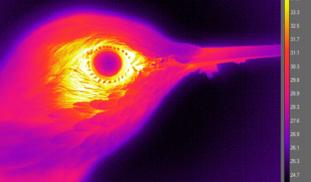Please wait...
About This Project
When hummingbirds use more energy than they consume, they use deep hypothermia (torpor) at night to lower energy costs. Torpor is not restorative like sleep so extended use can have physiological consequences. Our field work suggests hummingbirds might be capable of controlled shallow hypothermia. This would be a novel tool for periods of low energy intake. We will use thermal imaging to track nighttime body temperature to see if hummingbirds use the more restorative shallow hypothermia.
More Lab Notes From This Project

Browse Other Projects on Experiment
Related Projects
Using eDNA to examine protected California species in streams at Hastings Reserve
Hastings Reserve is home to three streams that provide critical habitat for sensitive native species. Through...
City smart: Are cities making birds smarter?
One cannot go to Florida and miss the White Ibises roaming golf, park and private lawns. But how does a...
How do polar bears stay healthy on the world's worst diet?
Polar bears survive almost entirely on seal fat. Yet unlike humans who eat high-fat diets, polar bears never...


